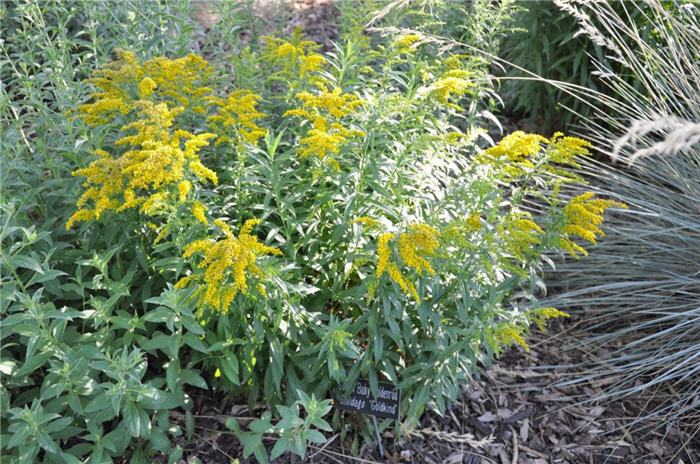| Botanical Name: Solidago hybrids | |
| Common Name: Goldenrod |

-
Anatomy
-
Culture
-
Design
Plant Type
Perennial
Height Range
Under 1', 1-3', 3-6'
Flower Color
Yellow
Flower Season
Summer, Fall
Leaf Color
Green
Bark Color
n/a
Fruit Color
n/a
Fruit Season
n/a
Sun
Full, Half
Water
Low, Medium
Growth Rate
Fast, Moderate
Soil Type
Clay, Loam
Soil Condition
Average, Rich, Poor, Well-drained, Dry
Soil pH
Neutral, Basic
Adverse Factors
n/a
Design Styles
English Cottage, Formal, Meadow, Mediterranean, Ranch, Woodland
Accenting Features
Fall Color, Showy Flowers
Seasonal Interest
Summer, Fall
Location Uses
Background, Perennial Border, Shrub Border, Foundation, Patio, Walls / Fences
Special Uses
Cut Flowers, Erosion Control, Mass Planting, Naturalizing
Attracts Wildlife
Birds, Butterflies
Information by: Stephanie Duer
Photographer:
Photographer:
-
Description
-
Notes
Goldenrod is a wonderful group of perennials that bring bright, cheery color to the fall garden. It is clump-forming and has tiny, bright yellow flowers borne in dense, horizontal, plume-like panicles on the ends of upright, stiff, alternate-leaved stems. Heights range from 12 to 5 to 6 feet tall, with spreads usually equal to its height (though the very tallest ones are generally narrower than tall). Blooms mid summer to early fall, and is an excellent choice for perennial or shrub borders, meadow-styled landscapes, or pairing with ornamental grasses. Attracts birds and butterflies.
Grow in average, dry to medium, well-drained soils in full sun to part shade. Goldenrod tolerate poor, dry soils and light shade, but perform best in full sun. Will grow in clay soils. Drought and deer resistant; attracts butterflies. Useful for erosion control. Has been wrongly accused of causing hay fever which is actually an allergic reaction caused by wind-borne pollen from other plants such as ragweed.